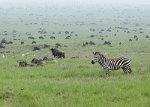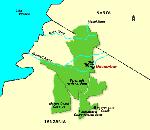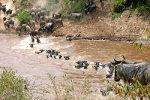 Every year one of the most incredible natural spectacles on the planet occurs in East Africa when nearly 2 million animals are known to travel a distance of around 1,800 miles driven by the seasonal rains. Moving through Tanzania and Kenya vast numbers of Wildebeest, Zebra and Gazelles can be seen migrating together in search of fresh grazing.
Every year one of the most incredible natural spectacles on the planet occurs in East Africa when nearly 2 million animals are known to travel a distance of around 1,800 miles driven by the seasonal rains. Moving through Tanzania and Kenya vast numbers of Wildebeest, Zebra and Gazelles can be seen migrating together in search of fresh grazing.
Although the exact timing of the Great Migration varies from year to year depending on the rainfall, the cycle remains the same, starting with the calving season which occurs between January and March. Some 400,000 Wildebeest calves are born on the southern Serengeti plains, with the majority of them appearing during a three week period in February.

Through July and August the herds spread out across the Grumeti Reserve and into the heart of the Serengeti National Park and continue moving north until September when the Mara River presents the biggest hurdle yet. This deep, fast flowing river runs from the Maasai Mara Game Reserve through the northern Serengeti and leads to a frantic panic of the herds when crossing.


